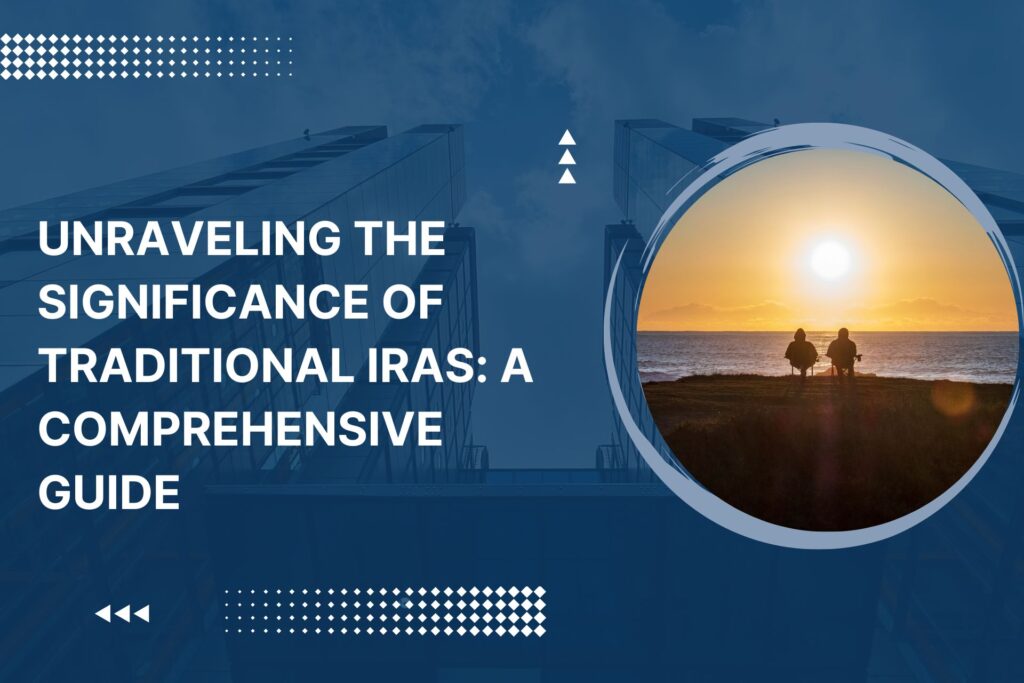Understanding Traditional IRAs: An Overview
Traditional Individual Retirement Accounts (IRAs) stand as stalwarts in the realm of retirement planning. As financial instruments designed to secure one’s financial future, Traditional IRAs offer a multitude of benefits and advantages that merit exploration and comprehension. In this comprehensive guide, we delve deep into the intricacies of Traditional IRAs, unraveling their significance and offering insights into their functionalities and implications.
The Foundation: What Exactly is a Traditional IRA?
At its core, a Traditional IRA serves as a tax-advantaged retirement savings account. Individuals contribute pre-tax dollars into their Traditional IRAs, thereby reducing their taxable income for the year of contribution. The contributed funds then grow tax-deferred until withdrawal during retirement, at which point they are subject to income tax.
The Mechanics of Traditional IRAs: Contributions and Limits
One of the key attractions of Traditional IRAs lies in their flexibility regarding contributions. Individuals can contribute up to a specified annual limit, with the option for catch-up contributions for those aged 50 and above. The contribution limits are subject to periodic adjustments based on inflation, ensuring alignment with changing economic landscapes.
Contributions to Traditional IRAs are made through various channels, including direct contributions, rollovers from employer-sponsored retirement plans, and transfers from other types of retirement accounts. These diverse avenues enable individuals to optimize their retirement savings strategies and capitalize on tax-efficient opportunities.
Tax Advantages: Exploring the Benefits of Traditional IRAs
The tax advantages offered by Traditional IRAs constitute a compelling incentive for retirement planning. Contributions made to a Traditional IRA are often tax-deductible, providing immediate tax benefits to contributors. This reduction in taxable income not only lowers the current tax burden but also enhances the overall value of the retirement portfolio.
Furthermore, the tax-deferred growth of funds within Traditional IRAs enables investors to harness the power of compounding over time. By reinvesting earnings and deferring tax liabilities until retirement, individuals can maximize the growth potential of their retirement assets, thereby bolstering their long-term financial security.
Distributions: Navigating Withdrawals from Traditional IRAs
Upon reaching the age of 59½, individuals become eligible to start withdrawing funds from their Traditional IRAs without incurring early withdrawal penalties. These withdrawals are taxed as ordinary income, reflecting the tax-deferred nature of Traditional IRA contributions and earnings. It is imperative for retirees to strategize their withdrawal patterns to optimize tax efficiency and preserve the longevity of their retirement funds.
Additionally, Traditional IRA distributions are subject to required minimum distributions (RMDs) once the account holder reaches the age of 72. These mandated withdrawals ensure that individuals gradually draw down their retirement savings over their remaining lifespan, thereby mitigating the risk of outliving their assets.
Rollovers and Conversions: Maximizing Flexibility with Traditional IRAs
Traditional IRAs offer avenues for flexibility through rollovers and conversions. Individuals can rollover funds from qualified retirement plans into their Traditional IRAs, consolidating retirement assets and streamlining investment management. Moreover, the option for converting a Traditional IRA into a Roth IRA presents opportunities for tax planning and optimization, empowering individuals to tailor their retirement strategies to their unique financial circumstances.
Rollovers and conversions enable individuals to adapt to changing financial landscapes, capitalize on investment opportunities, and optimize tax efficiency. By leveraging these strategic maneuvers, investors can enhance the value and flexibility of their retirement portfolios, laying the groundwork for financial independence and security in retirement.
Want to Know More about Traditional IRA?
Click here to Schedule a Free Consultation Today!The Role of Traditional IRAs in Retirement Planning
In the landscape of retirement planning, Traditional IRAs occupy a pivotal position as vehicles for wealth accumulation and preservation. Their tax-advantaged nature, coupled with investment growth potential, renders them indispensable tools for securing a comfortable and prosperous retirement. By harnessing the benefits of Traditional IRAs and leveraging strategic financial planning, individuals can embark on the journey towards financial freedom and fulfillment in their golden years.
Conclusion
In conclusion, Traditional IRAs stand as pillars of stability and security in the realm of retirement planning. With their tax advantages, contribution flexibility, and investment growth potential, Traditional IRAs offer individuals a pathway towards financial independence and prosperity in retirement. By understanding the intricacies of Traditional IRAs and implementing sound financial strategies, individuals can pave the way for a retirement filled with peace of mind and financial abundance.


